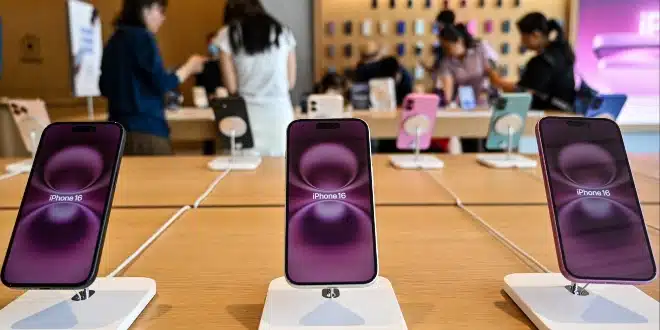U.S. President Donald Trump has reiterated his demand that Apple relocate its iPhone production to the United States, warning that products assembled abroad may soon face significant import penalties. In a post shared Friday on his Truth Social platform, Trump stated that unless Apple builds iPhones domestically, the company should expect to pay a minimum 25% tariff on all foreign-made units sold within the U.S. market.
The statement builds on his earlier “Liberation Day” address, during which he pledged to restore U.S. manufacturing through a series of sweeping tariffs aimed at reshaping global trade patterns. Trump has emphasized bringing industrial jobs back to American soil, identifying consumer electronics, and in particular Apple’s flagship product, as key targets.
Industry analysts, however, have raised serious doubts about the feasibility and economic impact of such a proposal. Dan Ives, who leads global technology research at Wedbush Securities, said in April that establishing a U.S.-based iPhone production ecosystem would be financially and logistically prohibitive. According to Ives, iPhones produced entirely in the United States would likely cost more than triple their current retail price of around $1,000 due to the complexities of replicating Asia’s specialized manufacturing infrastructure.
Ives noted that building domestic chip fabrication plants and related facilities could lead to a final product price approaching $3,500. He also estimated that Apple would require at least $30 billion and a three-year timeline to shift just 10% of its supply chain operations to the United States. Apple has not issued a formal response to Trump’s recent comments.
The smartphone industry’s reliance on Asia for manufacturing dates back several decades, when American firms began focusing primarily on software development and design—areas with higher profit margins. This model has enabled Apple to become one of the world’s most valuable companies. Currently, nearly 90% of iPhones are produced in China, with additional components sourced from Taiwan and South Korea. The final assembly is also concentrated in Chinese facilities.
Apple’s exposure to geopolitical and tariff-related disruptions has had a measurable impact on its financial performance. Since Trump’s inauguration in January, Apple’s stock has declined by over 14%, largely due to investor concerns about supply chain vulnerabilities and increasing trade tensions. Ives described the situation in April as a direct blow to Apple, stating that the company remains at the epicenter of what he called a “category five” tariff storm.
While smartphones have thus far avoided the highest tariffs due to exemptions for products containing semiconductors, Apple has not been entirely insulated. A 20% tariff tied to China’s alleged role in the fentanyl trade has affected the company’s broader import costs. In Apple’s latest earnings call, CEO Tim Cook revealed that a significant portion of U.S.-bound iPhones would now be shipped from India, and warned that tariffs could increase Apple’s operating costs by as much as $900 million in the current quarter.
In an effort to reduce its dependence on Chinese production, Apple announced in February that it would invest $500 billion in U.S. operations over the next four years. The initiative aims to expand domestic capabilities while simultaneously diversifying manufacturing into alternative markets such as India and Brazil.
Despite these steps, challenges remain. Gene Munster, managing partner at Deepwater Asset Management, suggested that if tariffs exceed 30%, Apple will likely have to pass some of the added expense onto consumers. He explained that the company could initially absorb the bulk of the financial impact, but that sustained or elevated tariffs would eventually necessitate higher retail prices.
Apple’s future manufacturing strategy appears increasingly tied to geopolitical developments, with the possibility of tariff escalation continuing to place pressure on the company’s global supply chain. Whether domestic production of iPhones becomes economically viable or politically imperative remains a central question as trade tensions persist.


